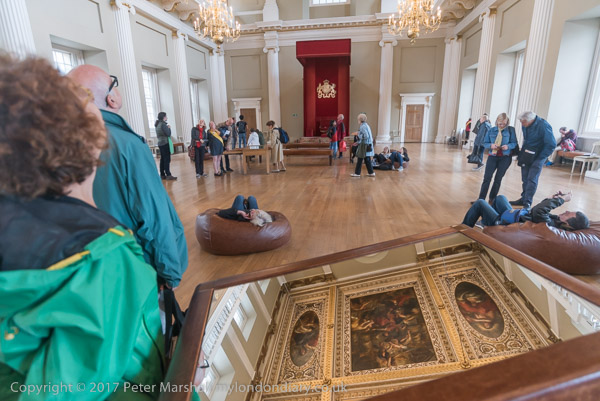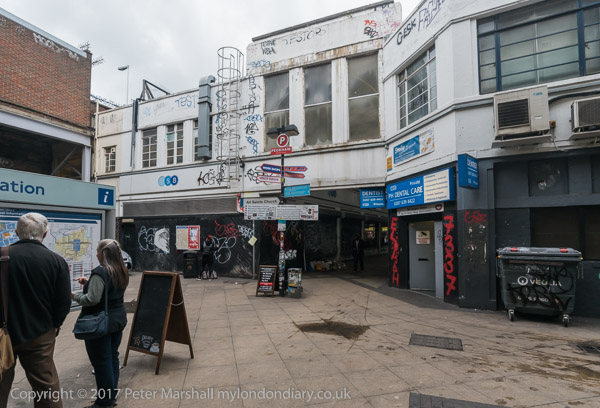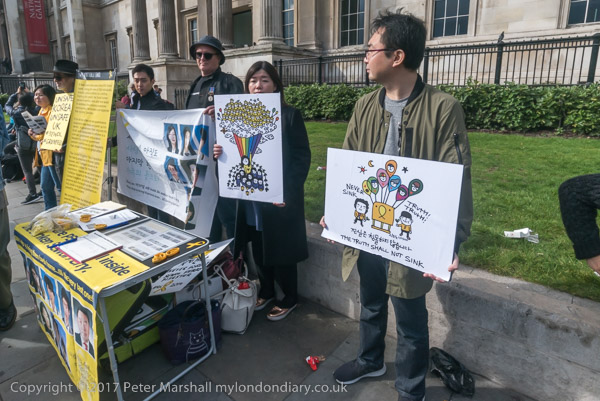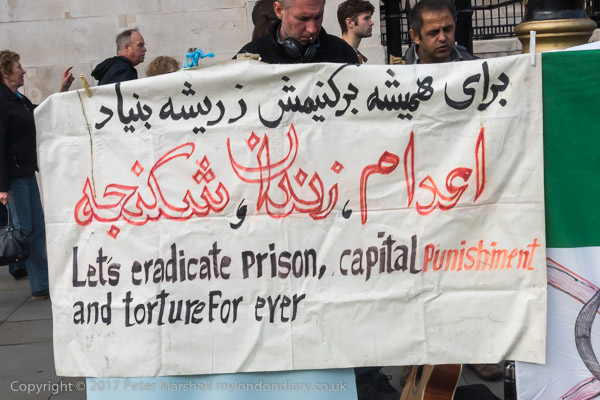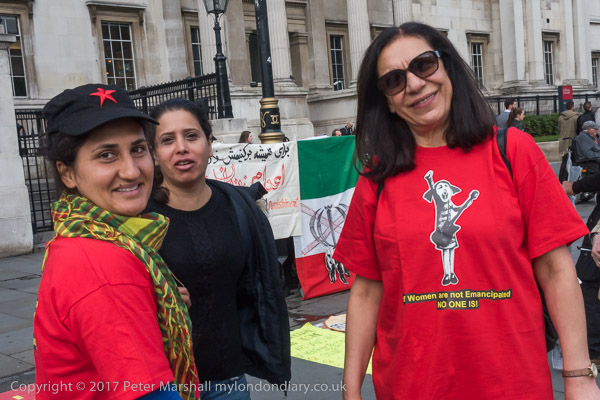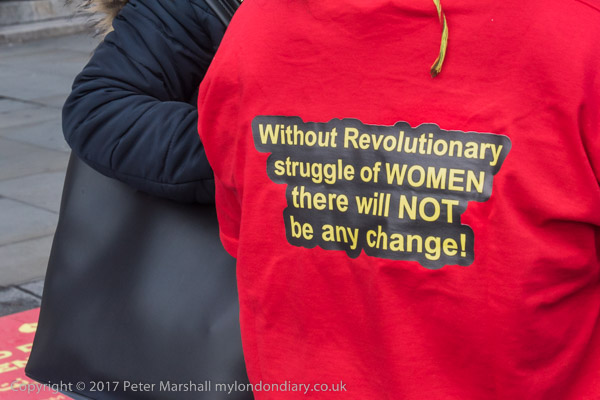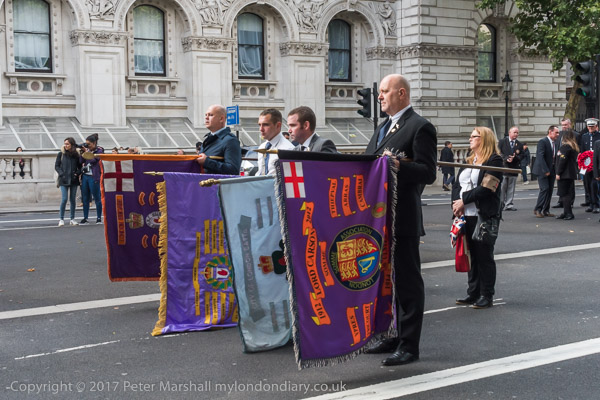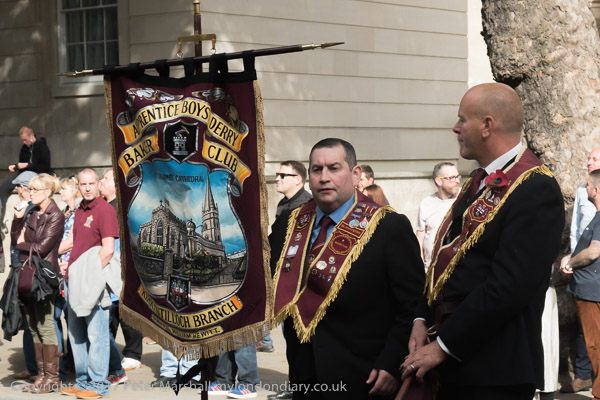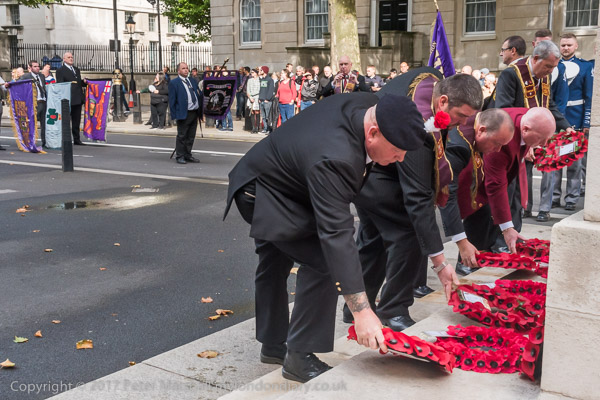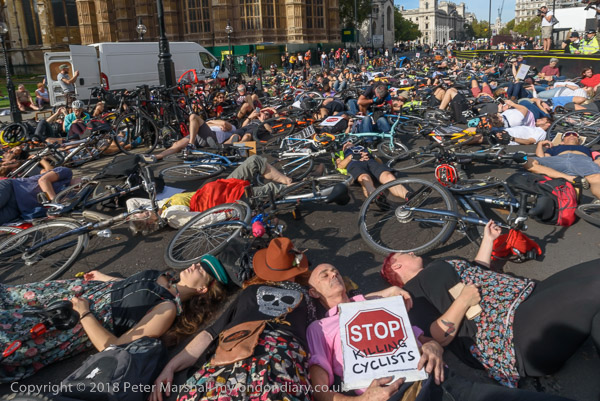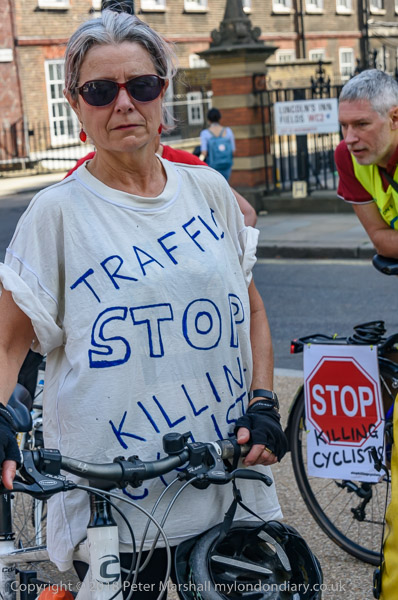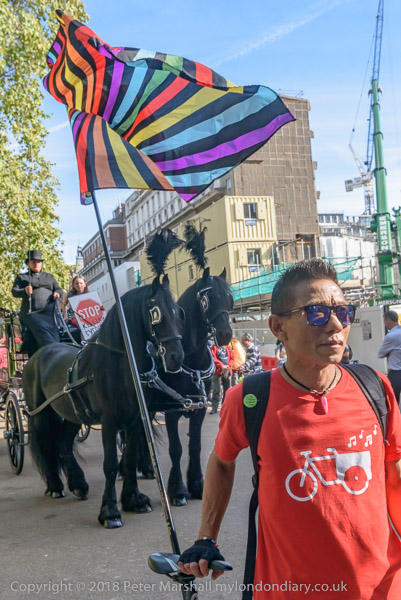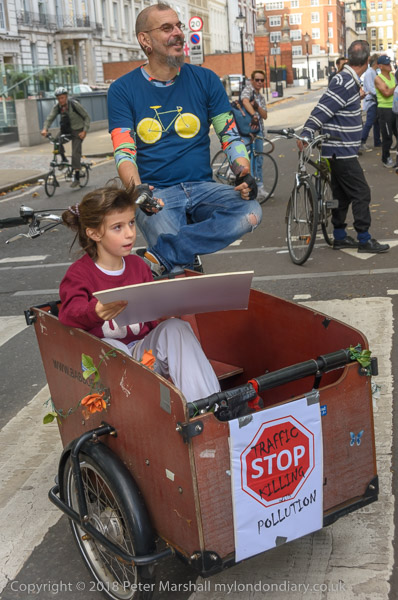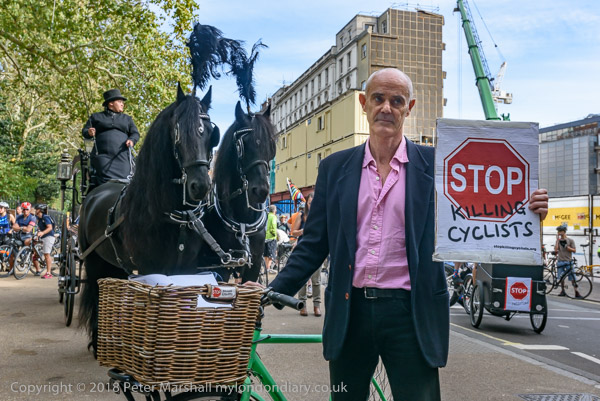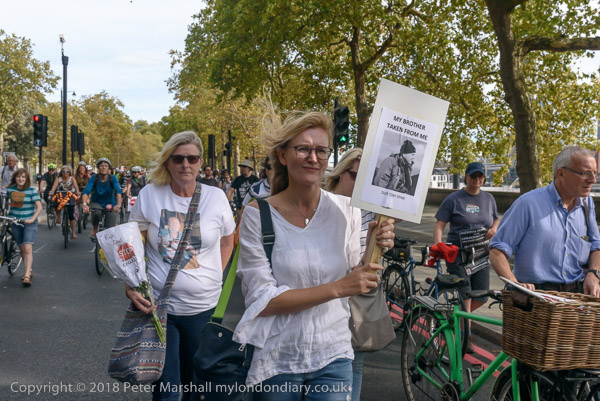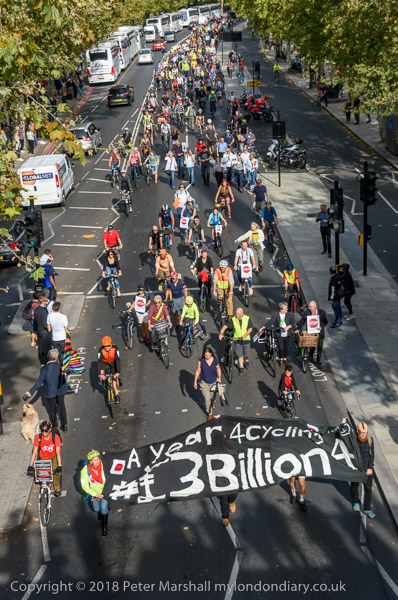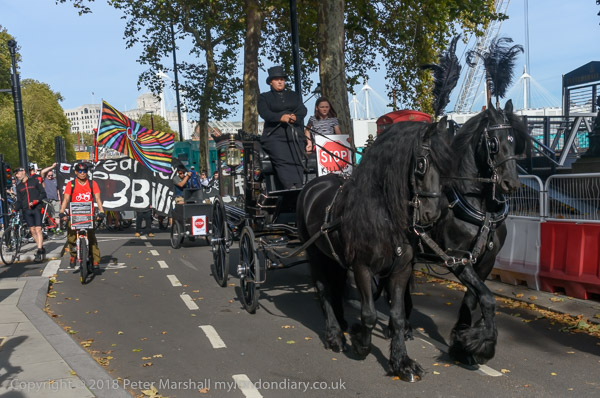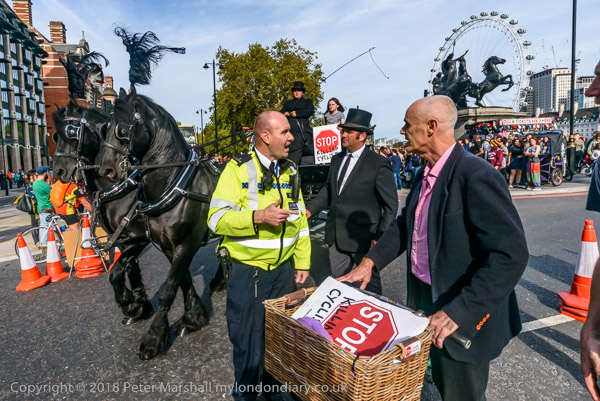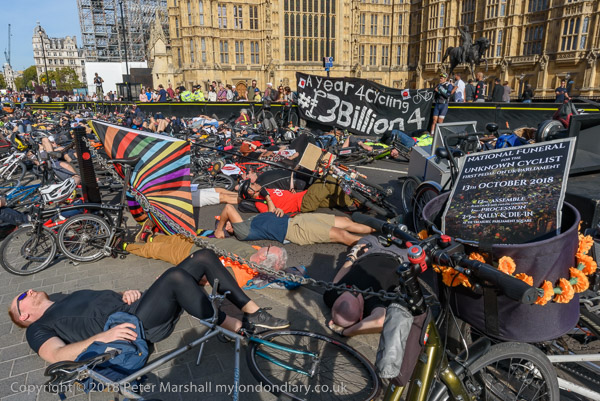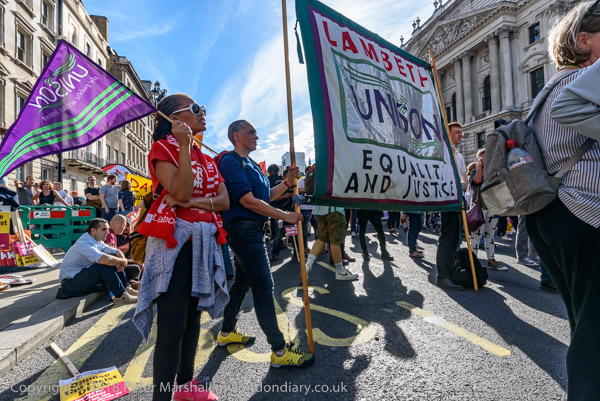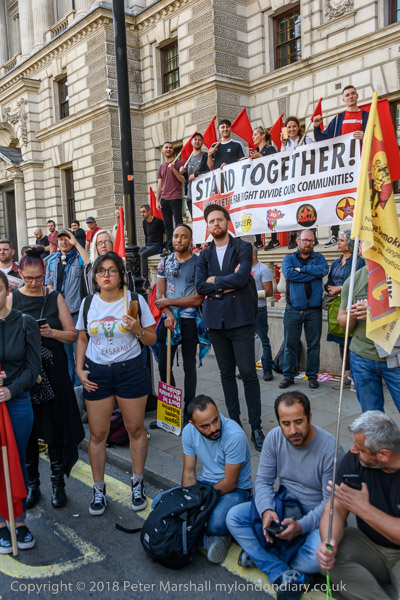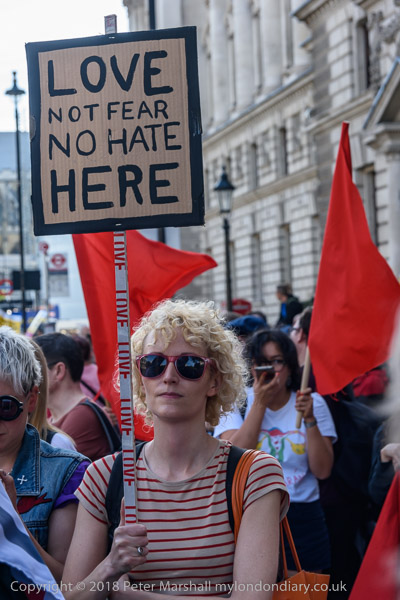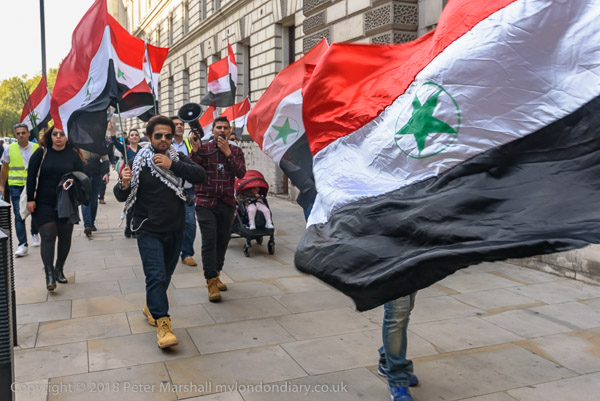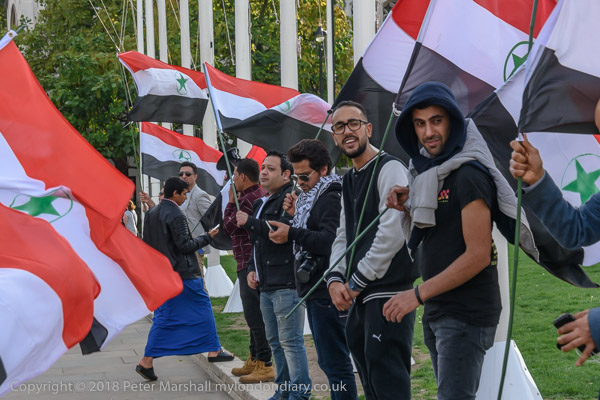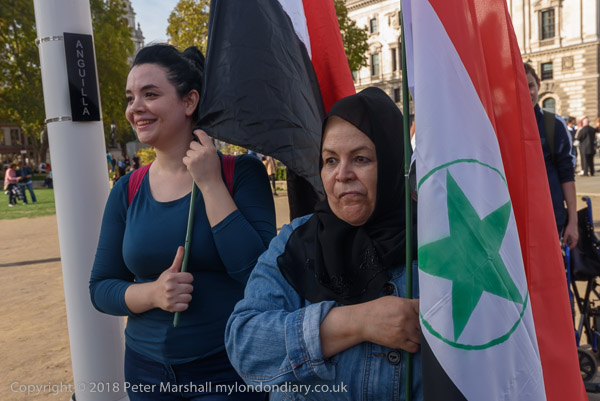Tar Sands, Iran & Valentine Party – Three very different events on Saturday February 13th 2013 on the streets of London. First an Olympic-themed protest against one of the dirtiest fossil fuel projects, then a protest by Iranians 31 years after the revolution that brought the Islamic regime to power and finally a Valentine’s Day street party against the commercialisation of the annual event and celebrating the power of love.
Canadian Tar Sands Oily-Olympics – Trafalgar Square
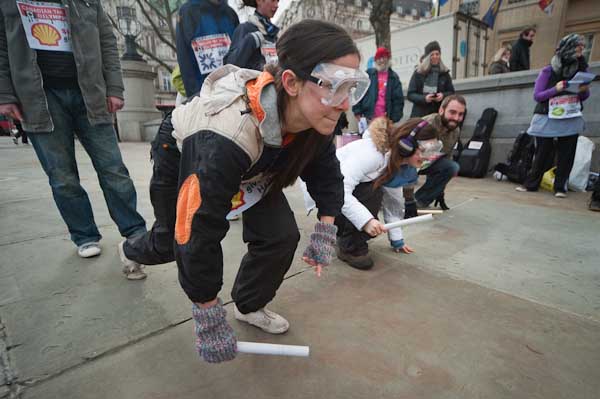
February 13th 2010 was the opening day of the Winter Olympics in Canada, and protesters took advantage of this to stage their own ‘Oily Olympics’, with teams representing BP, Shell and RBS, competing in a ‘Race For the Tar Sands’, complete with a medal ceremony next to Canada House in Trafalgar Square.
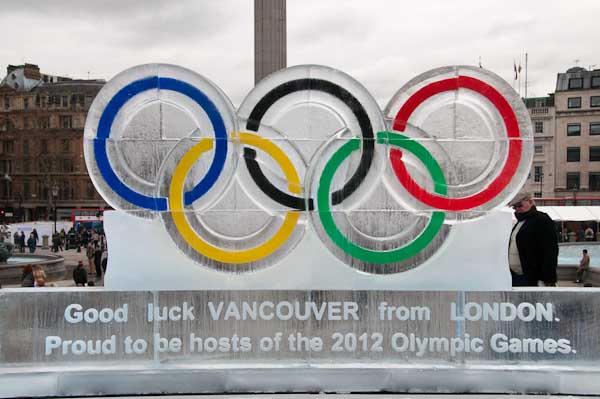
The square was in use for an event celebrating the official Olympics complete with giant screens showing ski jumping and an ice sculpture of the Olympic rings. But the protesters set up on the side closest to Canada House for their tug-of-war, a curling event and a relay race for oil.
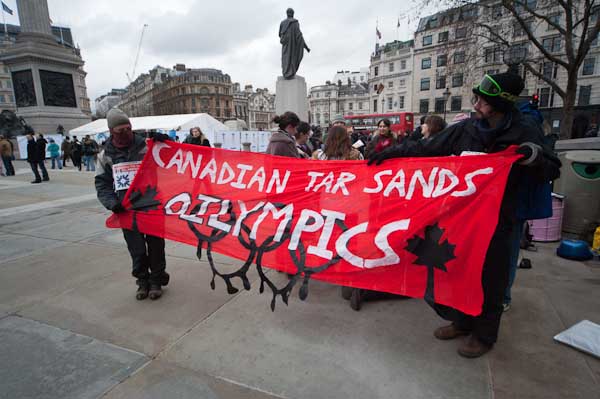
Getting oil from the tar sands in what is oddly called ‘The Sunrise Project’ uses a process called Steam-Assisted Gravity Drainage which produces from 3-5 times the carbon dioxide of traditional oil extraction. Until recently BP considered it to be too economically and environmentally unpleasant, but high oil prices and new management had changed their mind.
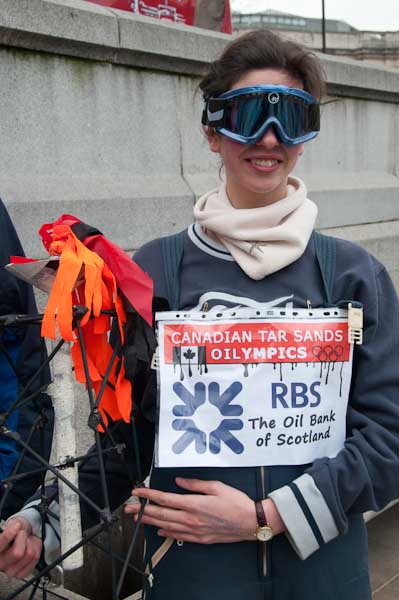
As well as their huge carbon impact the UK Tar Sands Network say that extracting oil from the tar sands involves “mass deforestation, water pollution, risks to human health, a major threat to wildlife and the trampling of indigenous rights.”
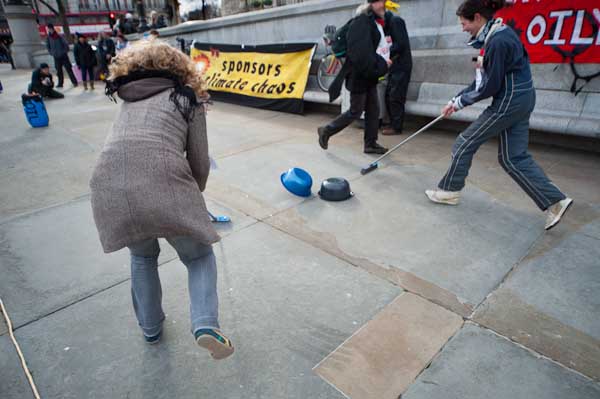
The heritage wardens who patrol the square for the Mayor of London told the protesters they were not allowed to protest in the square, and called the police when they continued. Police came and talked to them but did not stop the event as it was obviously not causing any obstruction or public order problem. Some of the officers were clearly amused.
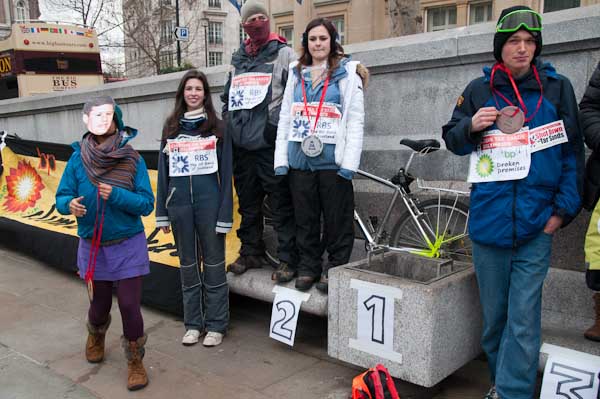
It was a fun event with a serious purpose, and most of those taking part were surprisingly competitive. I wrote: “It wasn’t at all clear on what basis the medals were awarded. For those that care about such things, BP got bronze, RBS the silver and Shell struck gold. And none of us were quite sure why there were two penguins present.”
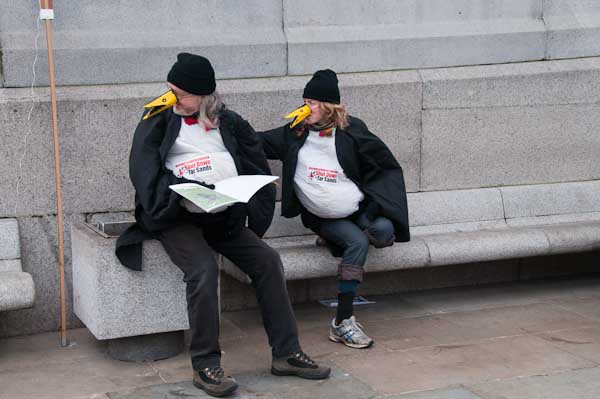
More pictures on My London Diary: Canadian Tar Sands Oily-Olympics.
Iran Opposition Rally in London – Parliament Square
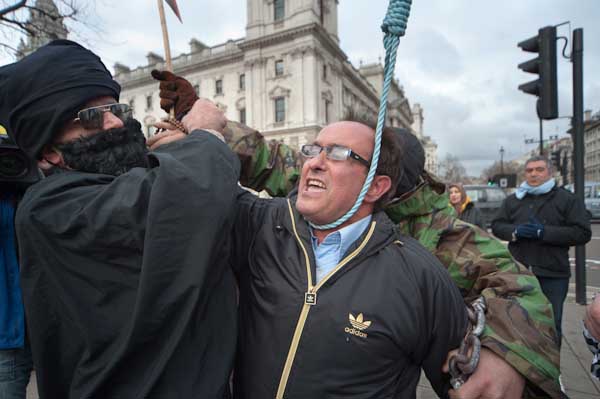
The previous Thursday had been the 31st anniversary of the 1979 Islamic revolution in Iran and had been marked there by both a large pro-government rally and also a ferocious clampdown on opposition groups by riot police, undercover security agents and hard-line militiamen.
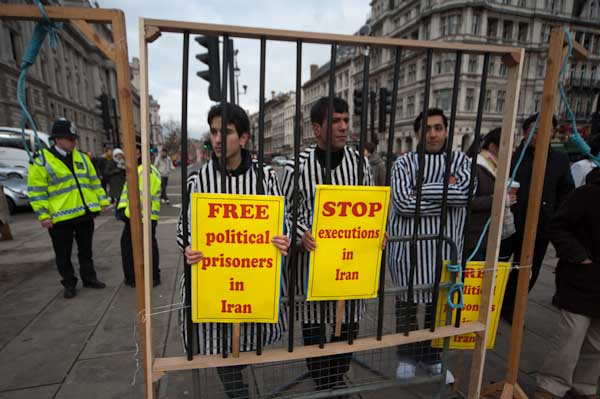
The protest in London was by supporters of the National Council of Resistance of Iran (NCRI) and the People’s Mojahedin Organisation of Iran (PMOI). The NCRI is a coalition of Iranian dissident groups but is dominated by the PMOI, which was proscribed in the UK at the request of the Iranian Mullahs in 2001; the ban was lifted against the UK government’s wishes after they lost an EU court appeal in 2009.
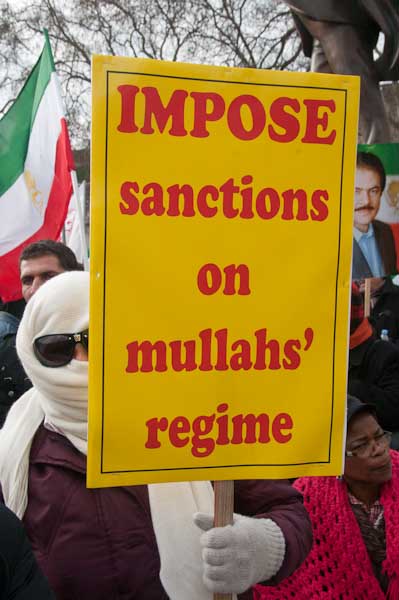
The PMOI were shabbily treated by the US after they signed a ceasefire agreement with them in 2003 for which they gave up most of their weapons and were confined to their camp in Iraq, leaving them at the doubtful mercy of the Iraq government when the US troops left.
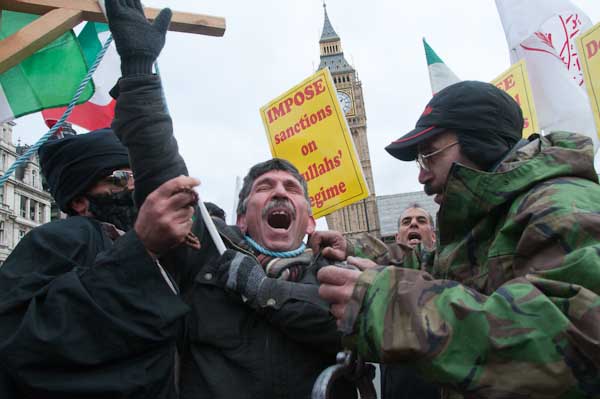
In 1995 the NCRI announced their Charter of Fundamental Freedoms for Iran, which would uphold all international agreements on human rights such as “freedom of association, freedom of thought and expression, media, political parties, trade unions, councils, religions and denominations, freedom of profession, and prevention of any violation of individual and social rights and freedoms.”
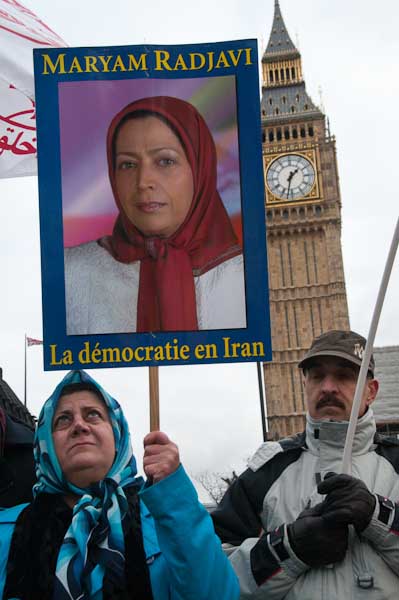
They call for a republic based on popular vote, the abolition of the death penalty, gender equality, a modern legal system without cruel and degrading punishments, the recognition of private property, private investment and the market economy and a foreign policy of peaceful coexistence without nuclear weapons.
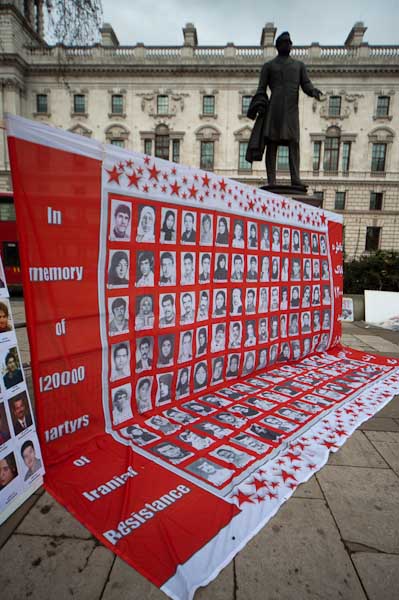
As well as many speeches the rally had a display of photograph of some of the 120,000 Iranians killed by the Iranian regime and pictures of people being attacked at demonstrations in Iraq, with a street theatre piece in which protesters were attacked by a bearded cleric and a militia man and dragged to a waiting hangman’s nooses.
More on My London Dairy at Iran Opposition Rally in London.
Reclaim Love Valentine Party – Piccadilly Circus
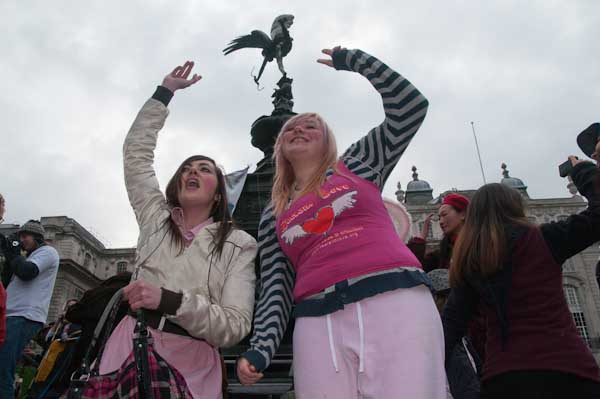
Reclaim Love’s free Valentine Party around the statue of Eros in Piccadilly Circus was started by Irish poet and love activist Venus CuMara to reclaim St Valentine’s day from commercialism and to try to harness the power of love to save the world.
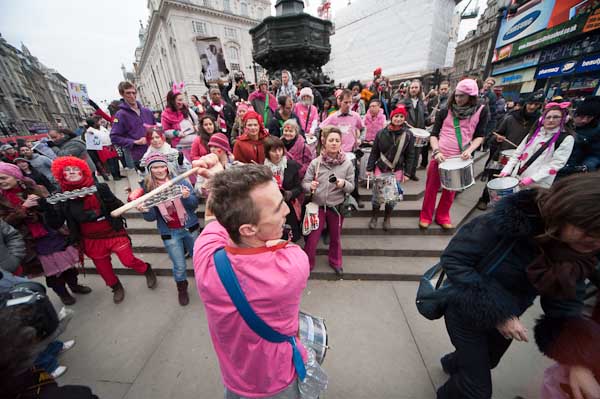
The event in 2010 was one of the largest, with people coming together not just around Eros where the event had begun six years earlier but there were events on this day at a total of 40 locations around the world – elsewhere in England, in Ireland, Scotland, Wales, Pakistan, India, Spain, Italy, Germany, Austria, Iceland, France, Brazil, Argentina, New Zealand, the USA, Canada and Australia – including surfers who were celebrating in the ocean off Perth, Australia.
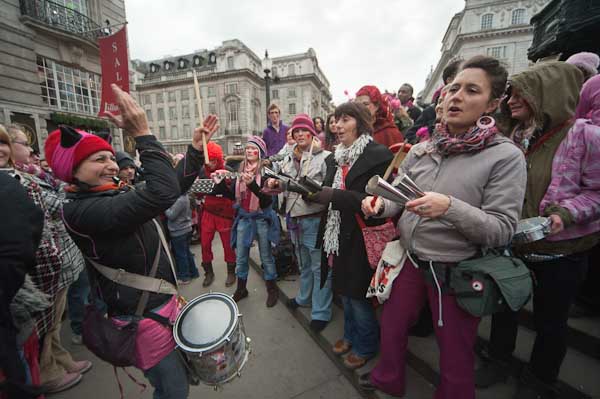
The party began with the powerful drumming of Rhythms of Resistance which attracted a great deal of attention, including many tourists in the area who stopped to watch and some danced and took part.
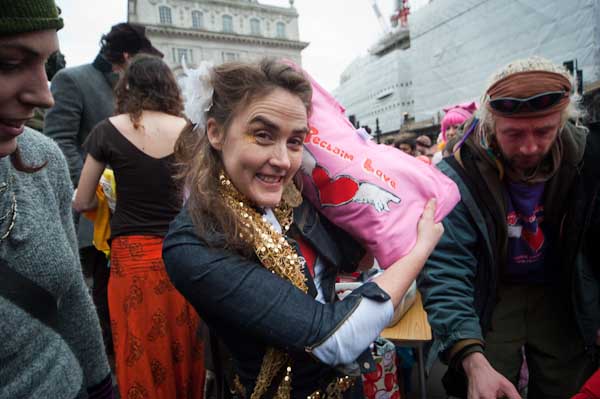
A large supply of free ‘Reclaim Love’ t-shirts were handed out by Venus as an expression of the “more fearless-generous-sharing-Love-centred way of thinking” behind the event and others handed out free cakes and sweets and offered free hugs.
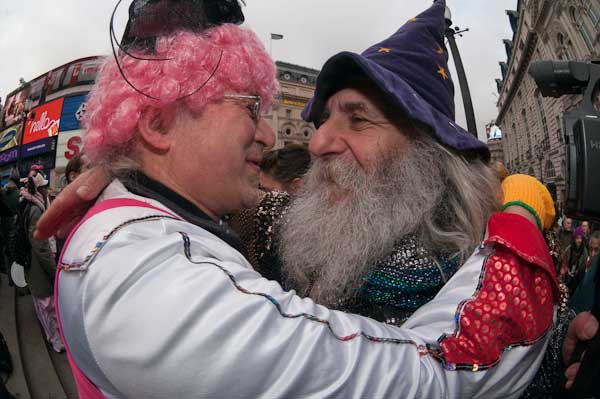
The climax of the event, celebrated around the world at 15.30 GMT was when people joined hands in a large circle around the area in an ‘Earth Healing Circle‘ and together repeated an ancient Indian prayer for peace in their own language. The English version “MAY ALL THE BEINGS IN ALL THE WORLDS BE HAPPY AND AT PEACE” people repeated here was also on the free t-shirts.
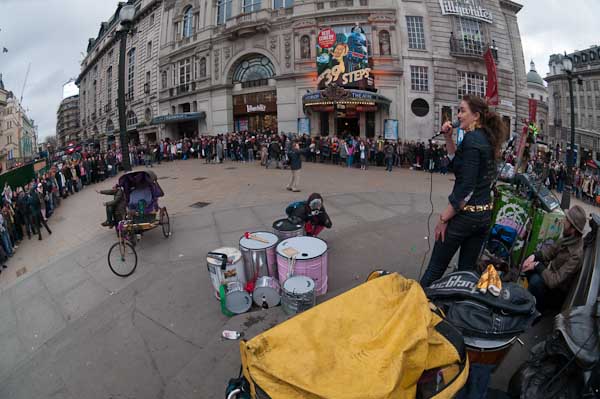
This year there were so many people at the event that in places around Piccadilly Circus the circle was two or three deep.
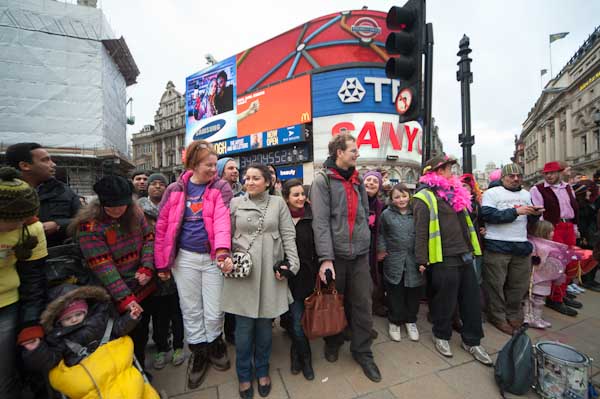
Venus hoped to keep building the ‘Reclaim Love’ movement and felt it would really have a tangible effect if there were 1.5 million or more people taking part, a number she hoped it would reach worldwide by 2015. Unfortunately for various reasons it never managed to reach that critical mass. The 16th ‘Reclaim Love’ free Valentine’s Day street party which took place in 2019 was I think the last, though I could be wrong. There is still a Facebook group, but this year there is only a single post on it, “Hi lovers are we doing anything this year on the 17th is it?” which has got no reply so far.
Many more pictures at Reclaim Love Valentine Party.
Flickr – Facebook – My London Diary – Hull Photos – Lea Valley – Paris
London’s Industrial Heritage – London Photos
All photographs on this page are copyright © Peter Marshall.
Contact me to buy prints or licence to reproduce.
